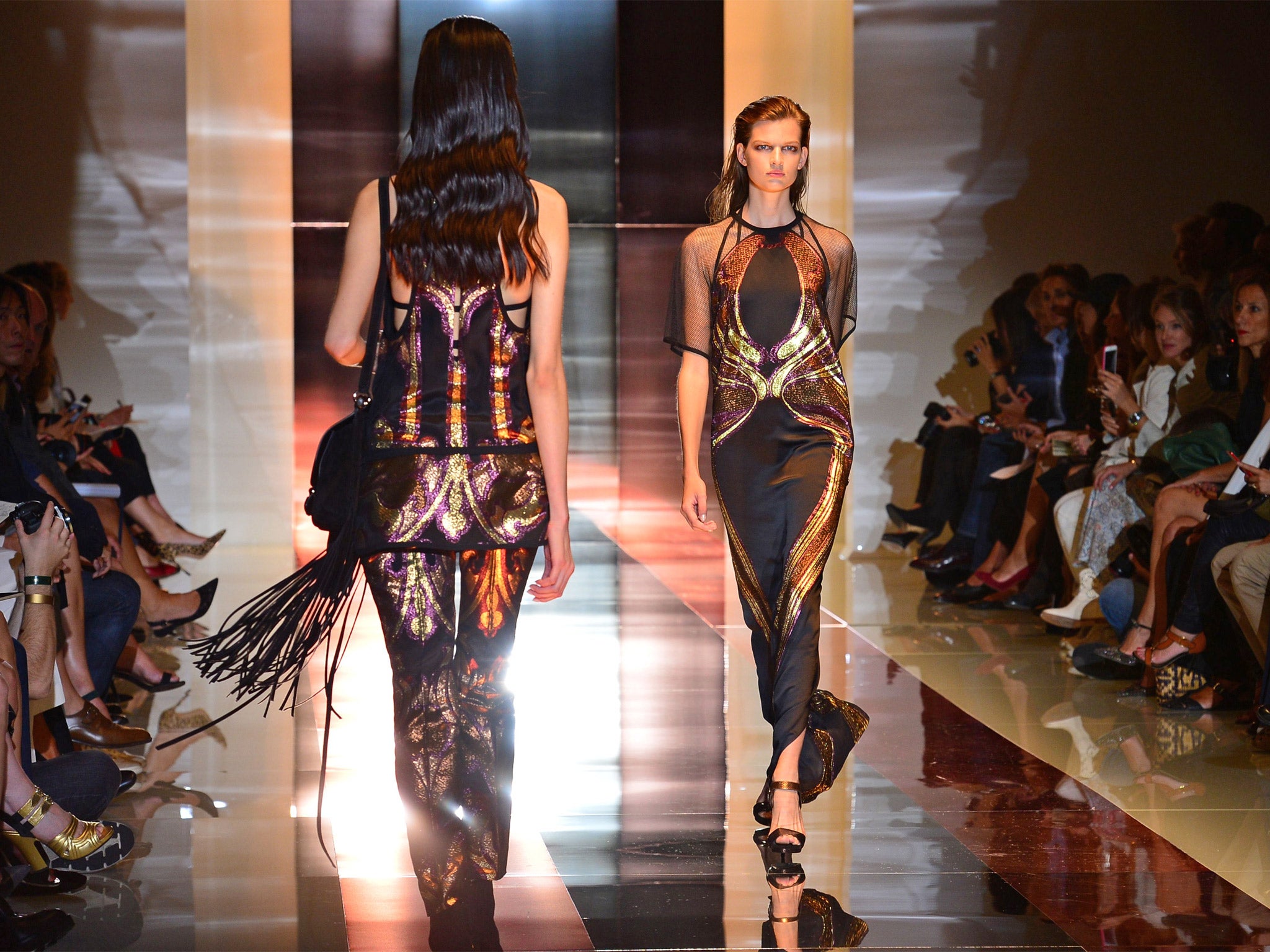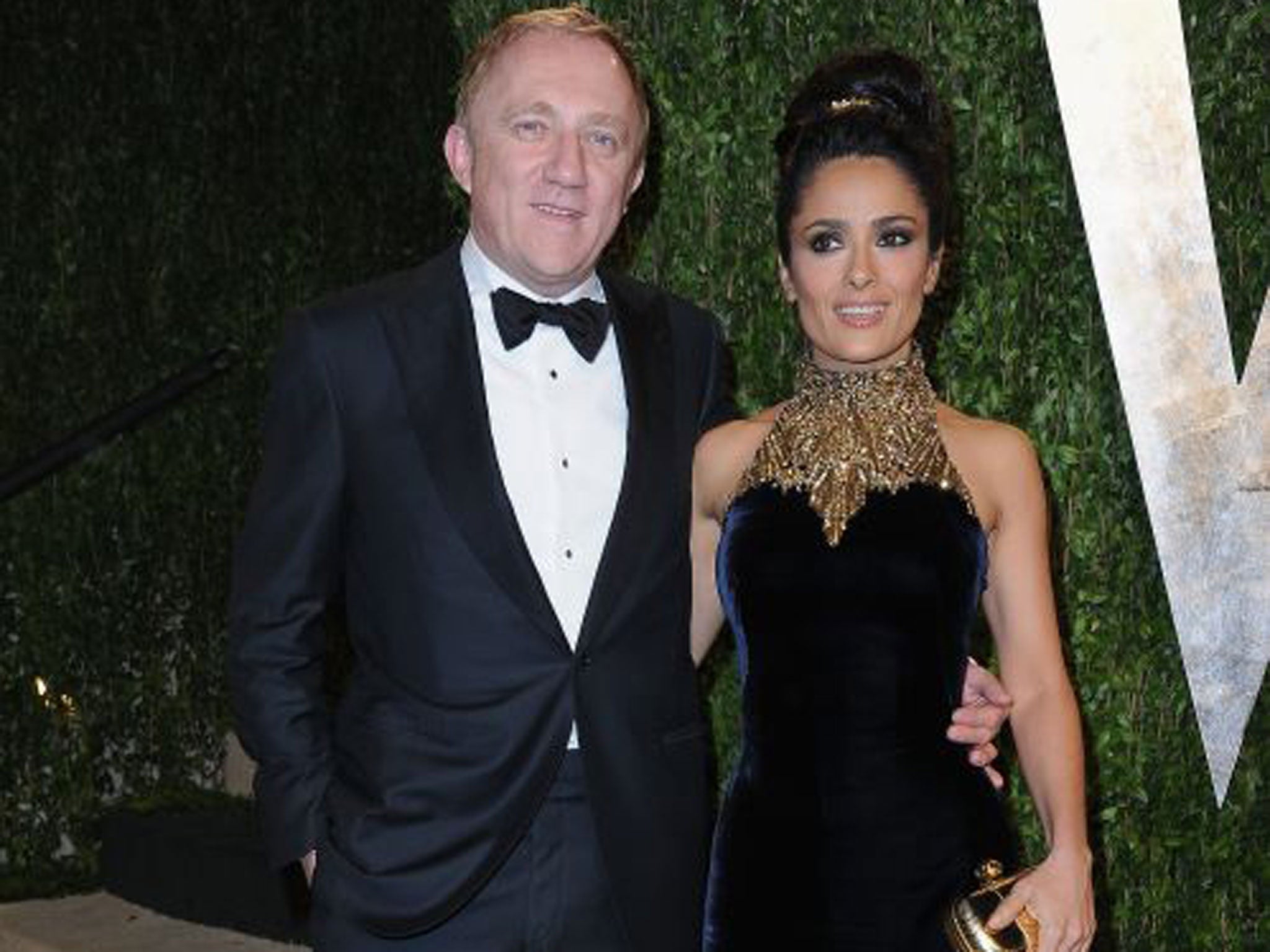America becomes absolutely fabulous
The US has a taste for European luxury goods, as Francois Henri Pinault tells Laura Chesters, and labels like Mulberry and Burberry are betting their shirts on it

Striding down Fifth Avenue clutching a monogrammed black Gucci leather satchel, François -Henri Pinault stands out among many of the trackpant-clad visitors to America’s most expensive shopping street.
Americans might still be better known for their casual fashions but Mr Pinault, the chief executive of Gucci’s owner, Kering, is betting that the millions of domestic and international tourists who descend on New York each year want to snap up European labels on their shopping sprees.
The Frenchman, who is married to the Mexican-American actress Salma Hayek and whose family owns more than 40 per cent of the Paris-based luxury goods giant, says: “Over the last few years we have talked about the growth engine of luxury being in Asia – but it is important to remember the size and potential of America.”
According to market research from Bain/Altagamma on the luxury goods industry, the Americas actually passed China as the growth leader last year. The researchers estimate that the continent’s luxury goods market will grow 4 per cent, and the US alone is valued at €66bn (£52bn) this year. Other European brands, including the UK’s Burberry and Mulberry, have also been steadily building up their presence across North America.
Mr Pinault is in the US to visit Kering’s American luxury division, which launched three years ago, and its flagship Gucci store in New York, the biggest in the world.
Kering, which owns 17 luxury brands including Saint Laurent and Christopher Kane, now plans to invest huge sums renovating some of its 180 US stores and expanding into new areas, as well as into Mexico and South America. Sales at it luxury division rose 8 per cent last year.
Mr Pinault is also betting that wealthy Americans are beginning to change their habits. “The way of life here has been to not dress up, but the US shopper is becoming more sophisticated.”

Sarah Willlersdorf at Boston Consulting Group agrees that the wealthy millionaires and billionaires in the States have traditionally spent their cash on cars and experiences rather than expensive clothes, but that now what BCG calls the “personal goods” sector is about to enter a boom period.
She says: “The aspirational masses here do want to spend on luxury – they want to spend on brands, and it is growing. There is a huge change in the desire to buy brands.”
BCG expects that by 2020 the US will have more than a third of the luxury market and will still be bigger than China’s high-end sector. Japan will account for 7 per cent and the rest of Asia about 23 per cent of the global luxury market. Milton Pedraza, chief executive of the Luxury Institute, a consultancy, agrees: “There are big opportunities for European luxury brands in the US.”
America already makes up 18 per cent of Kering’s group sales, and Mr Pinault is keen to make sure its brands have the best stores in the best locations across the US – not just in New York, which has always had Sex and the City-style fans of European labels.
Ms Willlersdorf adds: “It is not just about East and West coast. The middle and south are very wealthy. European brands are under-represen-ted, particularly in second-tier cities.”
Kering will still open new stores such as in Miami, Seattle and California, but Laurent Claquin, head of Kering America, says: "Now we are opening new stores in new neighbourhoods in the cities we are already in."
Domestic tourism is also a big driver, but similar to Europe, the huge and growing international tourist market is where the real money can be made.
The US welcomes 70 million foreign tourists (see the panel on Miami, above right), who spend around $180bn (£105bn) a year. But even in the country’s biggest tourist destinations, such as New York, only around 20 per cent of the visitors are from overseas.
Experts expect a continued influx of wealthy visitors from Brazil, Mexico and Argentina, as well as Europeans and the fast-growing Chinese and Asian travellers.
European luxury brands may see plenty of growth opportunities in the US, but they are up against established US names such as Ralph Lauren, Calvin Klein and Donna Karen, as well as Michael Kors, Coach and Tory Burch. So is there really an appetite for fancy French, Italian or British labels?
In the eyes of Mr Pinault, many of the designer US names are not even luxury brands. This might be a case of French snobbery but Kering’s principles of quality and creativity mean a US company that makes most of its products in factories in China is merely a fashion brand not a luxury one. He says: “There are very few luxury brands from the US.”
He explains: “Contemporary brands such as Theory, Vince and Acne are very much developed in the US but these are not luxury – they are closer to fast fashion in their strategy.”
Rather than compete in this sector, Mr Pinault is doing the exact opposite. Amid concerns that big brands were becoming ubiquitous, the luxury giants have taken the decision to make their products even more expensive.
Mr Pinault says: “Gucci was the first brand that was challenged by getting to a certain size. We are taking the brand upscale. The challenge was to remain exclusive while being larger. We have raised the price of Gucci handbags by 30 per cent. We have left that price segment for the contemporary brands to fill the gap between mass market and luxury.
“The alternative was to stay and sell at the lower price points, but in the medium and long term it would kill the brand.”
The new strategy has not immediately helped sales but Mr Pinault insists “the strategy is starting to pay off”.
If he is wrong and the wealthy US shopper refuses to ditch their trainers and tracksuits for $5,000 handbags, Kering could still benefit; its sports and lifestyle division has five brands including Puma.
If Kering can’t sell middle Americans a Gucci or Saint Laurent handbag, a pair of Puma trainers and trackpants might go down well.
Join our commenting forum
Join thought-provoking conversations, follow other Independent readers and see their replies
Comments